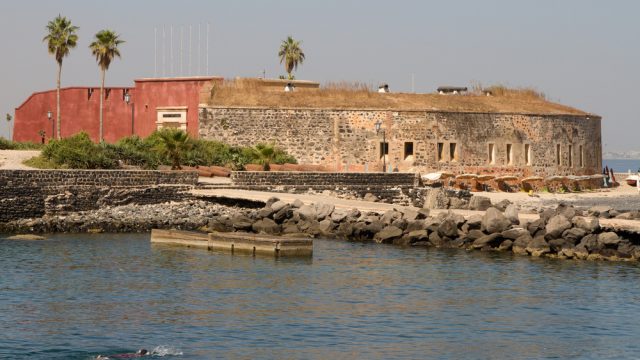Africa is full of rich wildlife and interesting cultures, but to fully know how the continent developed, you have to learn about its history (including African slavery).
One of the most visited places are the African slave castles in Ghana.
The Cape Coast Castle there was known as the “gate of no return” and the last stop for slaves before crossing the Atlantic Ocean.
It was originally constructed in 1555 by the Portuguese but passed through the hands of the Dutch and the British during the slave trade.
Nearby Elmina Castle was erected in 1482 and was one of the most important stops on the African slave trade route.
It’s now a UNESCO World Heritage Site where you can visit holding cells and learn about the conditions slaves had to live in.
The other infamous castle in Ghana is Osu Castle, but it’s now used as the seat of government in Ghana and harder to visit.
North of Ghana in Senegal is the House of Slaves on Gorée Island.
Although historians argue over how many slaves actually came through here, it was still opened as a museum in 1962 and was named a UNESCO World Heritage site in 1978.
Tourists can visit there from Dakar, and roughly 200,000 visitors go through the museum each year.
Another place to go learn about African slavery is the National Museum of Slavery in Luanda.
Luanda is not exactly on the top of the list of tourist destinations in Africa, but it’s certainly worth a stop, especially if you’re a history buff.
The museum was founded in 1997 by the National Institute of Cultural Patrimony, with the objective of depicting the history of slavery in Angola.
It also has hundreds of items on display that were utilized in the slave trade and features (Angola was one of the largest slave-traders on the African coast).

